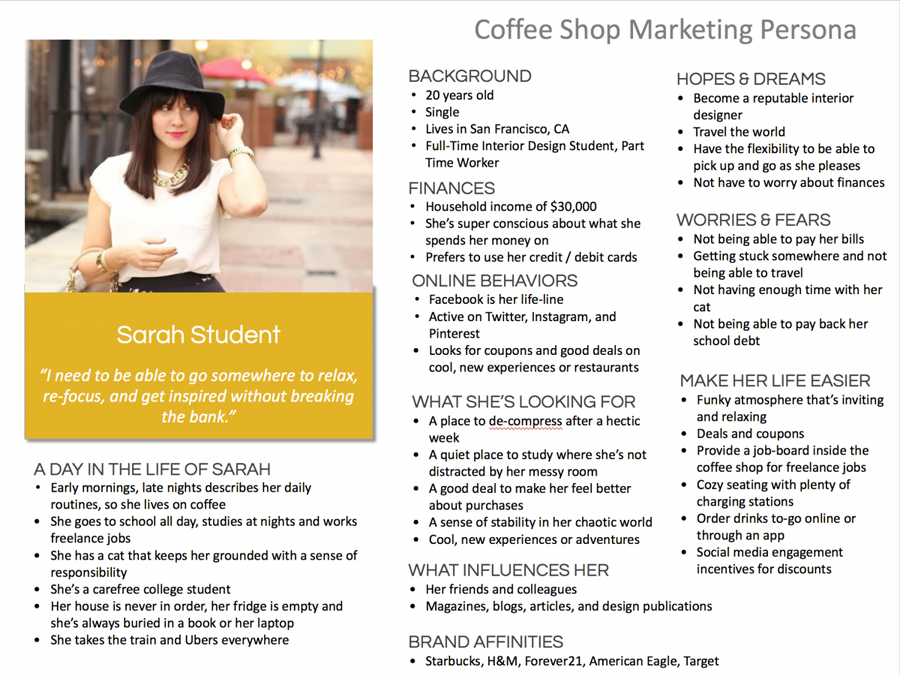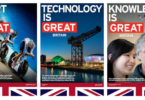Are you looking to create powerful marketing campaigns and ads? Customer Persona Profiling is where to start! And if you consider the practice somehow academic or too speculative, you will need to think twice because persona development is really practical and effective: the better you know your audience, the better you are able to identify it and the more effectively you will be able to reach your customers with ads that directly speak to them.
Everyday we are exposed to up to 10,000 marketing messages (including labels) and 600 ad messages: knowing and understanding who buys, or will buy your products is imperative to help stand out from the crowd, maximise your content effectiveness and your advertising return-on-investment. Knowledge is power!
What is Customer Persona profiling?
Personas are models of your potential customers, fictional characters created to present different user types that are going to use your product in a very similar way. They are archetypical users whose goals and characteristics represent the needs of a larger group of users.
Each persona is defined by a real name, a profile photo and is described in a one or two-page document that includes demographic information like age, location, job role, and income. Then comes the psychographic part where you can find behaviour patterns, goals, skills, interests, attitudes, background information like the environment in which a persona operates, as well as his/her reasons for buying and concerns. A quote will make the character more realistic and you can add also context-specific details depending on the product you are trying to sell him/her, for example: if you are in the tourism industry you might want to report which are the market apps they are using, such as accommodation or flight booking apps.
For each product or service you can define 3 to 5 personas but to identify the perfect number of personas your will need to do some market research. You can start segmenting the larger target customer base to bring out the main groups. Then you can break these groups into subgroups, and each customer subgroup should share a set of traits and characteristics. It’s really important that these commonalities are validated and not based on assumptions and the only way to avoid this is doing research.
The total number of personas you are going to have should be reasonable and it’s important to group user segments wisely. Personas require a lot of maintenance and have to be constantly iterated and updated. Primary personas are those that deserve a deeper focus and a greater portion of your resources because represent audiences responsible for more revenue.

Persona Profile Example by Iron Spring Design
Why Customer Personas are so important
Doing research and understanding your target audience is crucial in a customer-based business when you are willing to create exceptional products able to meet customer expectations and needs. Personas help a product team and the business in general to find the answer to one of their most important questions, Who are we designing experiences for? By understanding the motivations and concerns of your target users, you can design a product able to satisfy users needs and therefore be successful.
This success is strictly related to messages sent to the right audience. If building an audience is the key goal of any content marketing, then well-crafted personas are essential to successful content marketing. If you don’t have personas you are just guessing the needs of your audience and, for example, you are more likely to create content around what you know best instead of around the information your audience is actively seeking.
Having documented personas, even in their simplest forms, is also crucial when the company is scaling: they will serve as a single version of truth for everybody creating content for your organisation and everyone else in the company, not just those in customer-facing roles.
How to build Customer Personas
As stated already above and in tons of blog posts available online, you should totally avoid to made-up personas based on assumptions. It won’t work and you will just waste time and money!
To build personas you need two things: data analysis and talking to your customers. You can mix the two differently depending on the available budget and on which stage of your company lifecycle you currently are.
When you already have a company you have loads of data-driven tools able to support your research: Facebook Insights and Google Analytics, just to mention the most common and popular ones, have lots of demographics and psychographic data about your customers such as genre, age, location, interests, devices they use, etc.
If you don’t already have an established online business, you can take a look at your biggest competitors visiting their blogs and social media pages, or using services like SimilarWeb or Compete to analyse their traffic.
This video by Ignite Visibility is a great summary of how to create personas starting from data you have access to.
Customer Personas can also be largely built also thanks to surveys, feedback, and one-to-one interviews. Few tips for this type of research: questions should be specific but not confusing, you will want to know their job title, how a typical work day goes, and whether or not they are a decision maker within their family or company. You also want to ask about any pain points or challenges they have, because these are the problems your business wants to solve. And don’t forget to ask what sort of experience are they looking for when purchasing your type of product 😉
When you have already an established business, other resources you can use to create your customer personas is to look through your contacts database to find trends within a persona subgroup, for example looking for how they came to know your company or product in the first place. You can also talk to people within your company such as sales representatives asking about the types of questions and objections they hear from prospects. Similarly, you can talk to customer care specialists who know very well the post-sale stage of the customer journey.
It might worth mentioning that these last resources mentioned can be really useful when your management doesn’t allocate the budget needed to build personas and you need to prove that using this artifact is well-worth all the expenses. If this is the case, these ad-hoc personas or proto-personas based completely on assumptions and non-research-backed can be the beginning of a much more beneficial research in the near future.
Turning insight into action: boost your Marketing thanks to personas
Above I stated that personas are really worth it for their effectiveness. Let’s take a look at how they can help in practice.
Once you have personas you have stepped into the shoes of the customer and are more able to understand their perspective. This empathy mapping can help you to visualise what the person is hearing, seeing, thinking and feeling revealing less tangible insights, such as obstacles throughout the customer journey and opportunities for communication.
Product creation, marketing, and business development are all processes that can take advantage of this: you will start making products FOR your customers and creating content that is tailored to them.
Here are few tips to take the best out of customer persona profiling and get all their associated benefits:
- Creating persona-specific content – Your marketing can truly resonate with your personas’ real-life counterparts if for each particular persona you will write more targeted content in your blog, more engaging copy in your campaigns or ads and this will lead to increased engagement and result in a greater ROI
- Focus on where customers spend their time – No explanation needed: why you should spend budget on a channel that your customer doesn’t use?
- Speak their language – Your communication style should mirror how your customers speak and only customer personas can help you define this.
- Partner with people your personas love – Nowadays, affiliations, ambassadorships, and influencer marketing have a huge role in customers’ decisions. Through personas, you can find people and other companies that appeal to your customer and this will infinitely benefit your business
For sure there are even more action and benefits I could add to complete this list but I prefer to leave you with the interesting references below.
Just one last tip: customer personas are not nice-to-have tools abandoned as soon as you build it. Buyer personas change constantly, just like the real people behind them, and you should update them as you learn more, also continuing to review data and analytics, conduct surveys and interviews, sit in on sales calls, and read through customer comments, questions, and complaints. Set up a periodical update and review fitted to your schedule and business cycles.
Have you enjoyed this article? Do you think I could add any other insight or tip? Let me know in the comment section below 🙂
References:
- Raka Creative, The Dos and Don’ts of Creating Buyer Personas [15 March 2016]
- True Matter, Made-up personas don’t work [2018]
- Adobe Blog, Putting Personas to Work in UX Design: What They Are and Why They’re Important [21 March 2018]
- Forbes, How To Identify And Speak To Your Customer Personas [24 March 2017]
- UX Pressia, How many personas is enough? [24 May 2017]
- Shopify, How To Build Buyer Personas For Better Marketing
- Forbes, Creating A User Persona? Do These 15 Things First [12 June 2017]
- Econsultancy, What are customer personas and why are they so important? [9 August 2017]
- Nielsen Norman Group, Empathy Mapping: The First Step in Design Thinking [14 January 2018]
- Inc, How to Create Customer Personas That Breathe Life Into Your Marketing [21 September 2017]
- HubSpot Blog, How to Create Detailed Buyer Personas for Your Business [Free Persona Template] – [28 May 2015]
- Alexa Blog, Here Are 10 Buyer Persona Examples to Help You Create Your Own [publication date n/a]
- Iron Spring Design, How to Create a B2B or B2C Marketing Persona [publication date n/a]








Leave a Comment